Success lies not in ideas, but in execution and speed.
Author: Xin Xin
Editor: Jingyu
Source: Geek Park
In 2023, it was the year of the rise of AI software.
And in 2024, it may be the year when AI hardware gradually emerges.
At CES 2024 in Las Vegas, a consumer-grade AI device named Rabbit R1 made its debut, stealing the spotlight and quickly selling out the first batch of 10,000 units. Subsequent batches also sold out within a few days.
Following its debut at CES, the device was hailed as a major breakthrough in the AI field, creating a "post-smartphone experience." At the same time, there were mixed reviews of the Rabbit R1 from the tech community and media, with both positive evaluations of its AI hardware aspects and concerns about design flaws and its significance.
What is its use? Is it another product of AI hype? Or is it the next iPhone of the AI era?
Recently, Rabbit Inc. founder Lv Cheng responded to the "AI hot-selling" hardware behind R1 and how AI entrepreneurs should compete with giants in the current trend.
01 R1 "Sells Out" 50,000 Units
"The fifth batch of 10,000 Rabbit R1 devices has been sold out," rabbit announced last week.
Since its debut, Rabbit R1 has attracted widespread attention in the tech community, selling 50,000 units to date, with the sixth batch of pre-orders already underway, and delivery expected to take at least until June. Some have even raised the price by several hundred dollars and auctioned off Rabbit R1 on eBay.
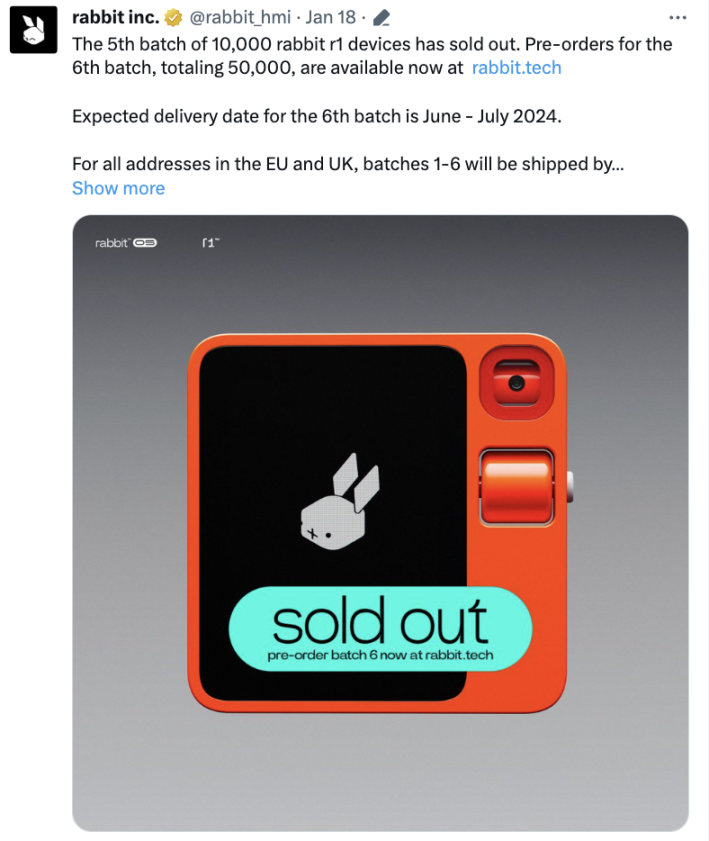
The fifth batch of Rabbit R1 announced as sold out | rabbit
For many buyers, the most attractive feature of this square device in terms of appearance is its retro orange shell, reminiscent of handheld game consoles from the last century.
The device's touchscreen is 2.88 inches, with a scroll wheel for browsing AI task information, a push-to-talk button, and a rotating camera with a privacy door for executing computer vision tasks, such as object recognition.
Internally, the device is equipped with 4GB of memory, 128GB of storage, a 2.3GHz MediaTek processor, Wi-Fi and cellular connectivity options, a USB-C port, and an empty SIM card slot, with a price of $199.
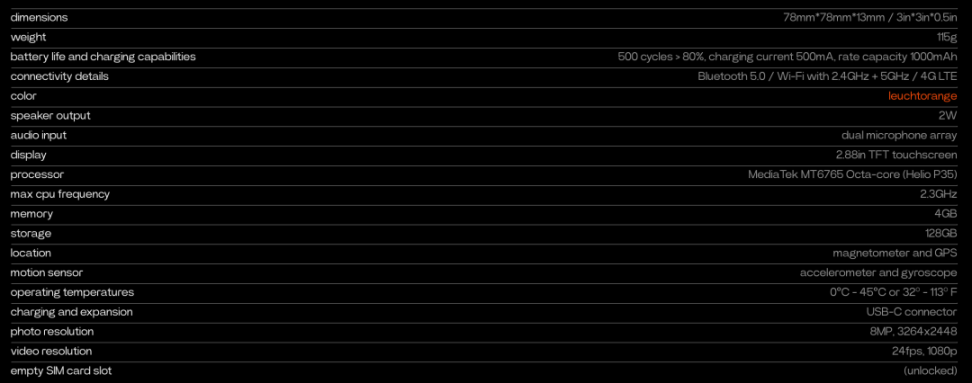
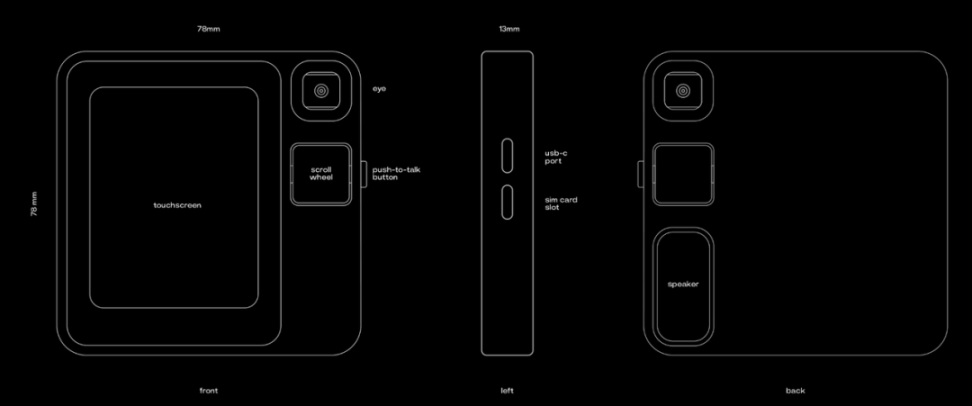
Rabbit R1 specifications and structure | rabbit
However, unlike smartphones, Rabbit R1 does not have standalone applications but connects to mobile apps through its own operating system, Rabbit OS.
In simple terms, Rabbit R1 acts as an AI agent, operating your phone on your behalf.
According to the company, Rabbit OS is the first operating system built on the Large Action Model (LAM). At the AI functional level, the difference between LAM and LLM is that LAM can process natural language and convert it into executable tasks. LAM can interact with common applications (such as Apple Music, Uber, eBay, and Amazon), support voice commands, and perform complex tasks on behalf of users, such as planning travel itineraries, booking tickets, shopping, sending messages, controlling music, and answering queries.
The basic model is said to be able to learn users' intentions and behaviors when using specific applications, then infer and model human operations on the computer interface, and mimic and execute them. In the near future, users can teach their "rabbit" to perform specific tasks, such as removing watermarks from photos using image editing software.
"These features enable users to trigger actions faster than on the most powerful flagship smartphones," the official statement from rabbit said.
Moreover, privacy protection is a selling point of Rabbit R1. The device claims to have no "always-on" listening mode, with the far-field microphone only recording when the Push-To-Talk button is pressed, and the design of the rotating camera ensures privacy, allowing users to erase stored data at any time.
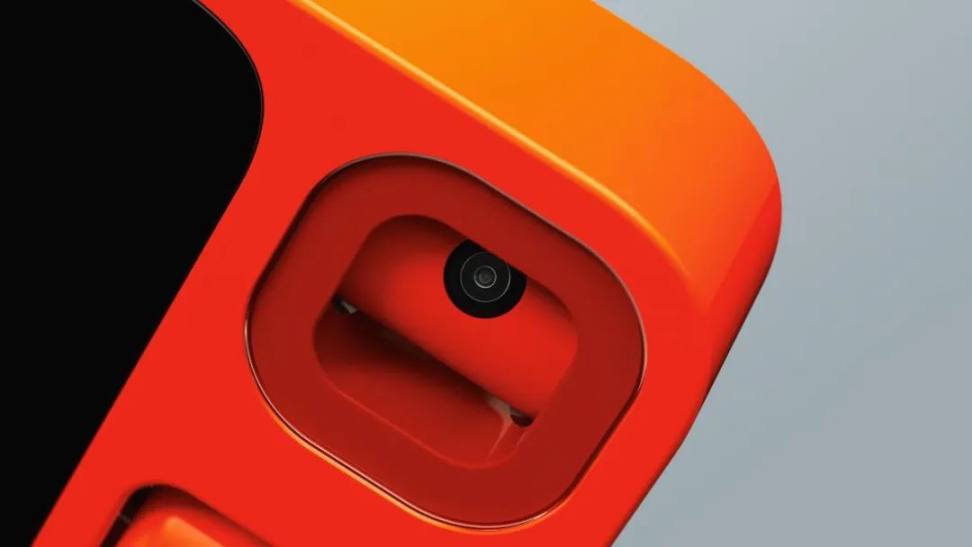
The camera of R1 can be promoted to protect privacy | rabbit
However, while Rabbit R1 is popular, some have questioned the design of the device. For example, "What if you are left-handed?" or "There is a lot of wasted space on the right side, so even if you are right-handed, you cannot touch the entire screen with your thumb."
In addition to being unfriendly to left-handed users, some netizens are dissatisfied with the device's thickness, finding the speaker a bit harsh, or criticizing the SIM card slot for only supporting 4G LTE speeds.
There are also practical doubts, such as why rabbit did not develop a mobile application directly and instead went to the trouble of making a hardware device. A software engineer from Silicon Valley bluntly stated, "I can use a mobile app, just need one device, why do I need two, why make something so complicated for something that was originally simple." "And does LAM also have the flaws of LLM? What if Large Action goes wrong? Do you still need to spend time confirming whether the device has actually executed the task?"
Despite this, in terms of experience, some players believe that these so-called issues can all be "forgiven," stating that R1 is a groundbreaking product, providing a new way to interact with technology, even creating a "post-smartphone experience."
Some buyers simply think, "It looks cool" and "cute" is enough.
Some even believe, "This is it. This is the iPhone moment of the AI era. Rabbit R1."
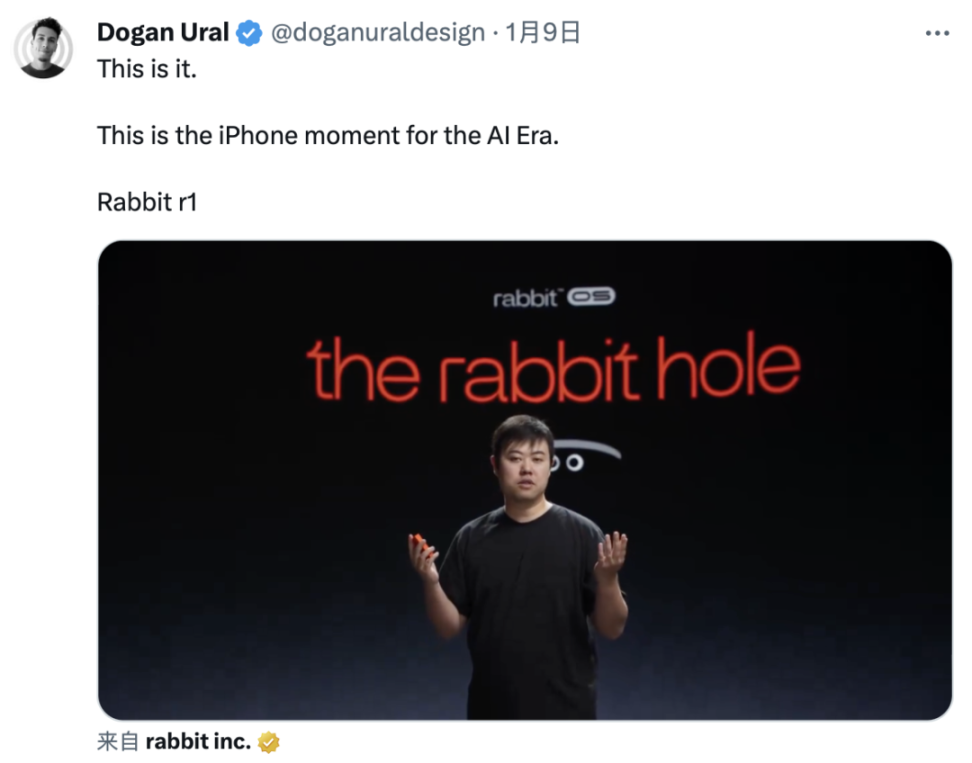
Some netizens call Rabbit R1 the iPhone moment of the AI era | X
02 R1 is not the "AI iPhone"
The company that created this orange device is called rabbit, founded in 2020 and headquartered in Los Angeles, California, by a group of Kaggle masters, former Google engineers, and serial entrepreneurs.
At the Rabbit R1 launch event, rabbit CEO Jesse Lyu stood in front of a black background, wearing a black T-shirt and holding a bright orange device. Prior to this, he was best known as the founder of Raven Tech at Crow Technology.
Lv Cheng graduated from the University of Liverpool in the UK, majoring in financial mathematics and marketing, and was a graduate of two sessions of Y Combinator Startup School. In 2013, he founded Raven Tech, which developed a conversational AI operating system and was later acquired by Baidu for use in smart speakers. For this reason, he worked at Baidu for over a year.
In recent years, Lv Cheng has been in close contact with Jesper Kouthoofd, founder of the Swedish consumer electronics company and manufacturer Teenage Engineering, and served as a board member of the company. The body of Rabbit R1 was also designed in collaboration with Teenage Engineering.
As of now, rabbit has raised approximately $30 million from investors including Khosla Ventures, Synergis Capital, and KAKAO Investment.
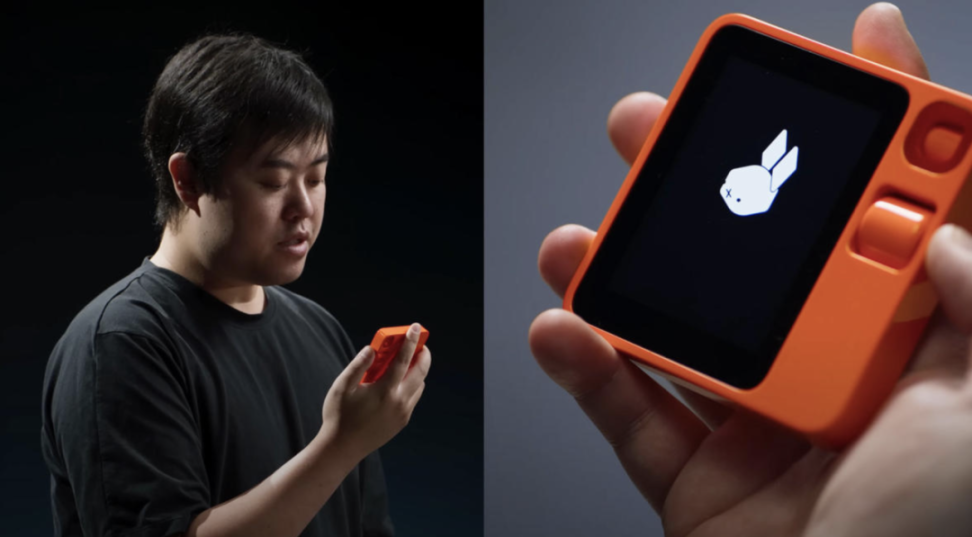
rabbit CEO Lv Cheng demonstrating Rabbit R1 | rabbit
"Today marks the beginning of a new era of human-computer interaction," said Lv Cheng, founder and CEO of rabbit. "We have reached a point where there are hundreds of applications on our smartphones with complex user experience designs that prevent them from communicating with each other. As a result, users feel frustrated with their devices and often feel lost."
Lv Cheng stated that rabbit is now working to establish an "intuitive app-less experience" through AI. Large Language Models (such as ChatGPT) have demonstrated the potential of AI to understand natural language, and their Large Action Model "goes further, not just responding to human input with generated text—it represents users to generate and execute actions to help complete tasks."
He emphasized that Rabbit R1 is not meant to replace phones but is something "completely different from a phone."
Lv Cheng believes that the smartphone market is dominated by two powerful operating systems deeply rooted in consumer expectations in terms of form and user experience. For a small startup, attempting to challenge this situation would lead to endless competition.
So, why create hardware instead of an application?
Lv Cheng admitted that Rabbit could theoretically be a software product, but his concern is that "Apps are relatively easy to build, but they are also easy to replicate, and very difficult to maintain and build customer loyalty."
He also believes that, in addition to the trouble of creating and maintaining applications for iOS and Android, "it's not that they are malicious, but they have the power to destroy you at any time." Furthermore, companies like Apple may see his code, "Remember, one of the most popular apps in the early days of the App Store was a flashlight app, and look at what happened now? Apple just incorporated that feature into iOS."
"So, is building applications sustainable for a startup? Maybe not." Despite the expense and challenges of hardware, he believes that hardware can provide more moats for the company's business, "the best way for a startup is to reduce risk in hardware."
This does not mean that hardware is perfect, "We're not saying you should ditch your phone, nor are we delusional to think that carrying two devices is better than one," but at this stage, Lv Cheng feels that they need to prioritize the software experience over ergonomic issues.
The current product is more of a balance, belonging to "a grand vision" but also "humble, cautious, and bold small steps," according to him. The former is an opportunity for human-computer interface transformation, and the latter is about using Rabbit to bring users back to the good times of the 90s.
The design inspiration for Rabbit R1 comes from the equipment of radio operators, including large walkie-talkie buttons, aiming for fun and reliability.
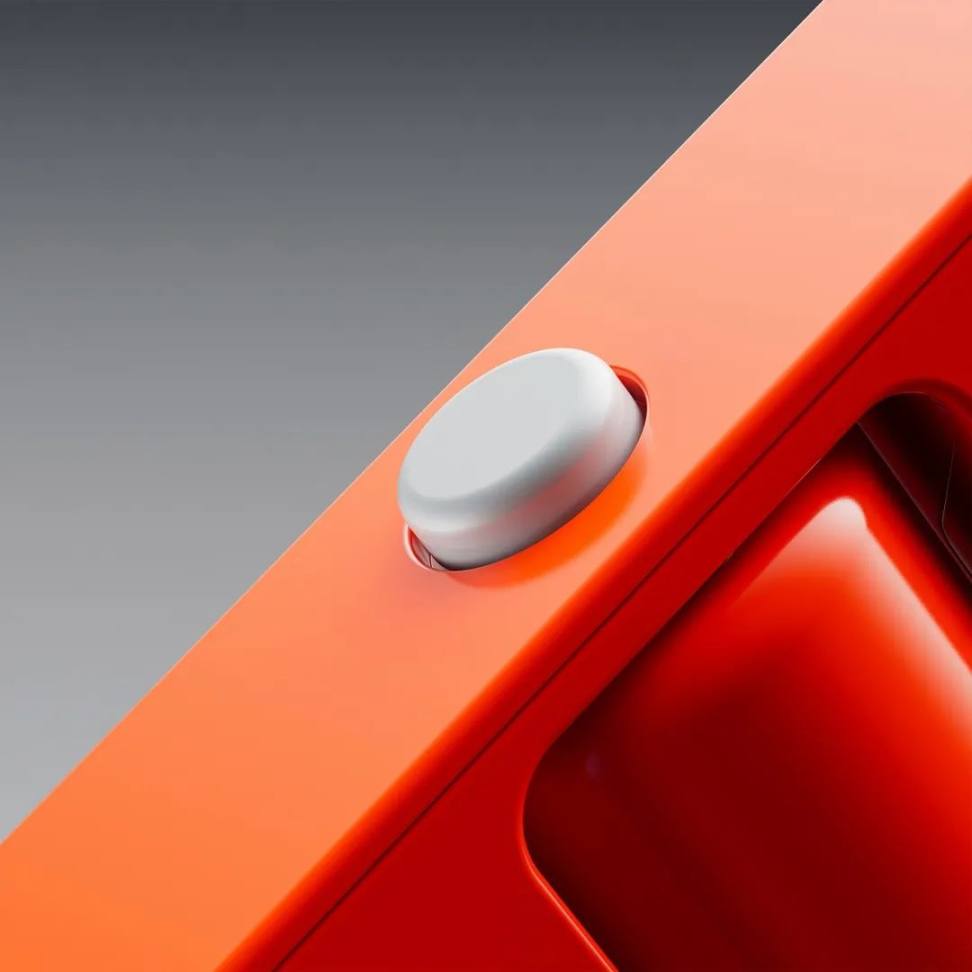
The button design of R1 mimics the Push to talk design of walkie-talkies | rabbit
As for what AI hardware means, Lv Cheng believes that the AI iPhone is still far away. In his view, hardware entrepreneurship is difficult, and the AI hardware field is new, and no one can do anything in the first attempt. To reduce risk, he chose a more conservative approach in Rabbit's design.
There are industry figures who have expressed approval of Rabbit R1's attempt. During the 2024 Davos Forum, Microsoft CEO Satya Nadella said that since the launch of the iPhone by Steve Jobs in 2007, the demonstration of Rabbit OS and R1 may be one of the most impressive demonstrations he has seen.
03 The AI Hardware Battle Begins
Now, Silicon Valley engineers are all vying for the next big thing in artificial intelligence.
In the rapidly developing AI landscape, Lv Cheng feels that they must launch products now to seize the strategic opportunity.
More and more hardware created around AI is emerging on the market, with some products just connecting to chatbots. To highlight the affordability of their own Rabbit R1, Lv Cheng also displayed hardware devices such as Humane's AI Pin on the screen at the launch event as a comparison.
Humane is a hardware startup founded by former Apple executives, and their wearable device AI Pin was publicly unveiled in November last year. But being the first bird does not guarantee success, as there were reports that the company had laid off 4% of its employees in early January before shipping any devices.
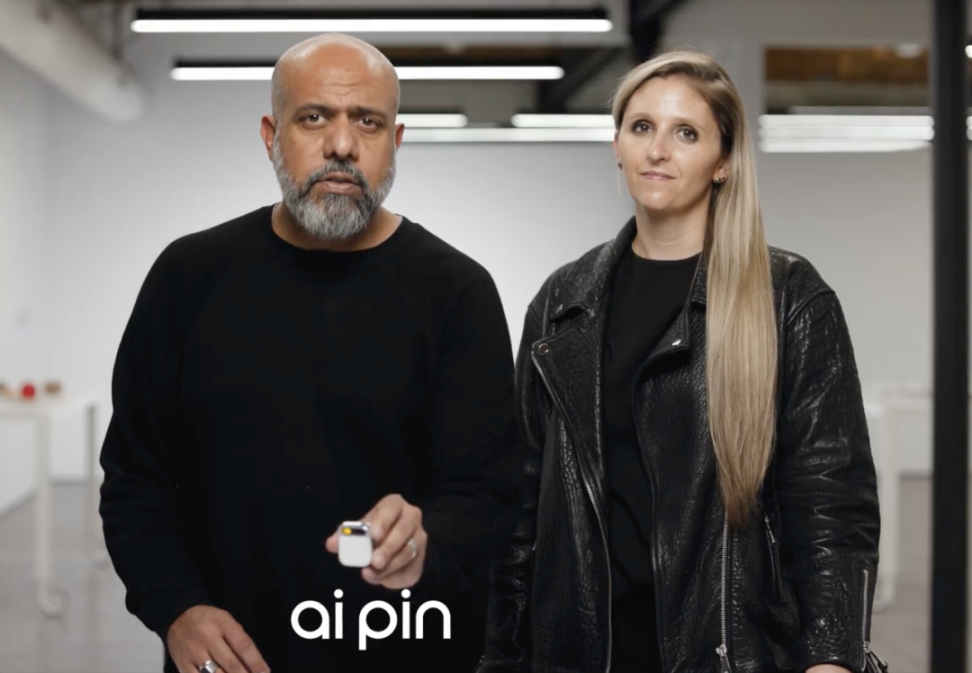
Former Apple executive launches AI Pin | Humane
At the same time, tech giants have also joined the experiment. Google is integrating generative AI into its hardware products, with the Pixel 8 series already including some photo editing features using generative AI, such as "Magic Editor" and "Best Face." The recent Pixel 8 Pro update also enables generative AI summaries and automatic reply suggestions for WhatsApp.
Google may have more plans and actions in the future regarding AI hardware, including launching a new AI assistant on the Pixel 9 and AI glasses with object recognition capabilities.
Amazon's smart speaker products will also receive the addition of generative AI, as they teased a new version of Alexa built on the new large language model last year, making it perform more like a human.
Apple's actions are also under scrutiny, but Apple is not vocal about generative AI. It is rumored that CEO Tim Cook does not believe it is necessary to add "AI" to the names of related features on the iPhone, but there are rumors that Apple has important plans for generative AI, including introducing large language models into Siri and building AI servers. Additionally, in a research paper at the end of last year, Apple researchers described a new method for running large language models on devices with limited memory.
As for OpenAI, CEO Sam Altman has not only supported Humane but has also had discussions with former Apple design executives about consumer AI devices. It is rumored that they have also negotiated raising $1 billion with SoftBank's Masayoshi Son. As for how to face the competition from these giants, Lv Cheng had this to say on X: "A common view is, oh, Apple can do it, Google can do it, so you'll just be crushed. Yes, they as giants can do anything, but that doesn't mean we should stand still, surrender, and not even try. In that case, startups wouldn't exist."
"If I had thought from the beginning that our idea was the best and our startup would definitely succeed, then I would be delusional. I created rabbit because I didn't have the patience to wait for these giants to do it," Lv Cheng said.
He made an analogy: "Would you rather be the wave itself, the best surfer in town, or a floating corpse? Users will leisurely choose the best beach to sunbathe and enjoy the scenery, but founders are not like that."
"Success lies not in ideas, but in execution and speed," Lv said.
免责声明:本文章仅代表作者个人观点,不代表本平台的立场和观点。本文章仅供信息分享,不构成对任何人的任何投资建议。用户与作者之间的任何争议,与本平台无关。如网页中刊载的文章或图片涉及侵权,请提供相关的权利证明和身份证明发送邮件到support@aicoin.com,本平台相关工作人员将会进行核查。




